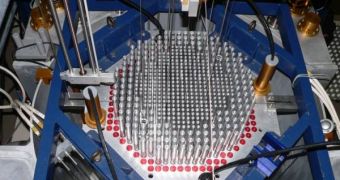Queens University experts now have the chance to build something that few other research facilities can boast having – their very own nuclear material testing facility. Thanks to a $6.9-million grant from the Canadian Foundation for Innovation (CFI), the scientists will now be able to build a test reactor, in which to analyze numerous aspects related to the way materials behave when exposed to extreme conditions. The money was awarded through the New Initiatives Fund financial instrument.
QU Mechanical and Materials Engineering Professors Rick Holt and Mark Daymond were the main beneficiaries of the fund, which was awarded to them based on their projects. They hypothesized that they could test nuclear materials inside a reactor that was not really a reactor. In other words, they want to simulate a reactor environment for their reactions, while at the same time keeping the experiments scientifically solid. The money they recently received is just the first batch in the overall $17.5-million project.
“Materials exhibit fundamentally more complicated behavior inside a nuclear reactor than when outside. This is due to the presence of the high neutron flux which alters the way that deformation, corrosion and failure occur. This leads to a major problem for scientists working in reactor design,” Holt explains.
“The Nuclear Materials Testing Facility is an exciting initiative to investigate these issues using an alternative approach, based on the use of accelerator technology to simulate reactor conditions rather than an actual reactor. The facility will provide a unique capability in Canada to support the development of materials for advanced reactor systems, and to improve our understanding of materials in use in existing reactors,” he adds.
“We will be able to measure the dynamic effects of the reactor environment on dimensional stability, fracture and corrosion-induced degradation, as well as advancing understanding of the effects of a reactor environment by performing carefully controlled experiments,” the expert says.
One of the main reasons why the reactor will be constructed is the fact that the effect of radiations on the materials used to construct a regular nuclear reactor cannot be studied in normal conditions. That is to say, while experts can account for regular material degradations, such as that brought forth by rusting, corrosion, and so on, they cannot say how a certain type of radiation will affect the steel, copper or concrete the reactor is made up of.

 14 DAY TRIAL //
14 DAY TRIAL //